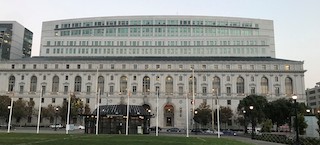Early in the morning of August 24, 2014, Jose B. and Alejandro P. sat on the tailgate of a truck at a car wash in the City of Arvin in Kern County. All of a sudden, multiple shots were fired. One hit Jose in the leg and others hit the truck tires.
Coincidentally, an Arvin Police Officer on patrol near the carwash happened to see a pickup truck driving slowly with its lights off and then saw seven to ten muzzle flashes coming from the front passenger window.
Shining a light on the truck, the officer saw defendant Jose Luis Valencia driving and defendant Edgar Isidro Garcia in the passenger seat. An hour-long vehicle chase ensued, during which time Garcia threw something from the truck’s window and it was later recovered. It was a part of a gun. Defendants were ultimately arrested and gun shot residue was found on the front passenger door of the pickup.
Both defendants were charged with attempted murder, assault with a firearm and active street gang participation under Penal Code § 186.22(a). The gang at issue was the Arvina 13 gang.
 California Supreme Court San Francisco
California Supreme Court San Francisco
The case went to trial. During trial, Arvin Police Officer Ryan Calderon testified as a gang expert. He had been a police officer for nine years, five and a half of which was specialized in gang enforcement. He estimated he had personally investigated 200 crimes involving the Arvina 13 gang. Calderon testified about their monikers, graffiti, tattoos, colors and territory, which included the car wash. He testified that their primary activities were shootings, assaults, burglaries and drug sales.
In Officer Calderon’s opinion, both defendants were Arvina 13 gang members, based on their tattoos and police contacts. He also testified to three predicate offenses committed by Arvina 13 members: a 2008 assault by Jose Arredondo, a 2010 assault by Adam Arellano and a 2013 attempted robbery by Orion Jimenez. Calderon did not have personal knowledge of these events; his only knowledge of these came from conversations with other officers and a review of police reports.
The first trial resulted in a hung jury. The second trial resulted in convictions of both defendants and both defendants were sentenced to extended prison terms.
On appeal to the Fifth Appellate District, defendants argued that the gang expert’s testimony about the predicate offenses violated People v. Sanchez (2016) 63 Cal. App. 4th 665 because it constituted inadmissible hearsay. The Fifth Appellate District agreed and reversed the active gang participation and enhancement allegations, but otherwise affirmed the convictions.
The People then appealed this ruling to the California Supreme Court. The Supreme Court’s opinion is a good read on how gang allegations must be proven, looking at the statutory scheme under the 1988 STEP (Street Terrorism Enforcement and Prevention) Act and the cases interpreting it.
The law punishes those members of a criminal street gang (defined as “a group of three or more people having one of its ongoing primary activities the commission of one or more enumerated crimes, with a common name or identifying sign or symbol, and whose members individually or collectively engage in, or have engaged in, a pattern of criminal gang activity.”)
The pattern of criminal activity is referred to as predicate offenses. People v. Louen (1997) 17 Cal. 4th 1, 4. Officer Calderon’s testimony was presented to establish the existence of such predicate offenses.
The Supreme Court then reviewed Sanchez, supra, which contrasted the admissibility of general information versus the inadmissibility of case-specific facts of which the testifying officer had no personal knowledge and thus, constituted hearsay in violation of the Sixth Amendment and Crawford v. Washington (2004) 541 U.S. 36.
The Supreme Court then evaluated the Fifth Appellate District’s ruling and found it was correct in light of Sanchez. It found that the trial court’s error was not harmless and it was prejudicial, so the Fifth Appellate District’s ruling was affirmed.
We present this summary as a good example of a case where a “gang expert” offers inadmissible testimony and the trial court admitted it, but in error.
The citation for the California Supreme Court ruling discussed above is People v. Jose Luis Valencia (2021) 11 Cal. 5th 518, 280 Cal. Rptr. 3d 581, 489 P. 3d 700.
For more information about the prosecutor’s burden in proving an offense as a “gang crime,” please click on the following articles:
 California Supreme Court San Francisco
California Supreme Court San Francisco